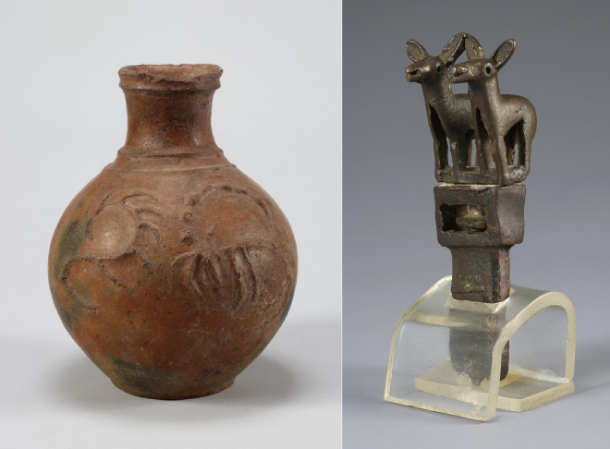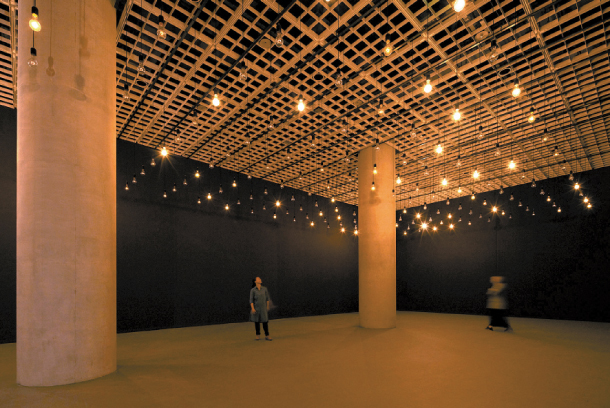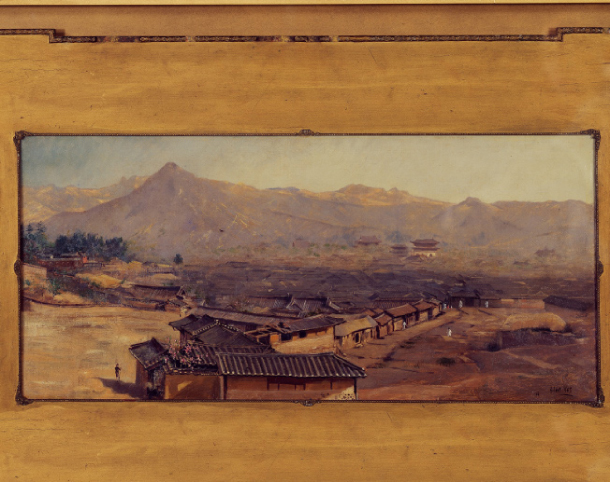2018.6.14 Museums & Galleries

National Museum of Korea, Yongsan District
To July 17: The Mongol Empire was the single largest empire in the history of the world. During its height, it stretched to the far corners of Eurasia.
The National Museum of Korea, in collaboration with the Institute of History and Archaeology of the Mongolian Academy of Sciences, the National Museum of Mongolia and the Bogd Khaan Palace Museum, looks back at the civilization that developed in the region as early as the prehistoric ages. “Nomadic Empires of the Mongolian Steppes” also covers the growth of modern Mongolia.
The exhibit is divided into three sections: “Dawn of the Empire,” featuring artifacts from prehistoric Mongolia; “Ancient Nomadic Empires of Mongolia” where visitors can see old relics from the Xiongnu Empire (the third century B.C. to the first century B.C.) and the Turkic Khaganate (552-745); and “The Mongol Empire and the Descendants of Chinggis Khan,” history of Mongolia from the 13th century and onwards.
From ancient stoneware to clothes worn today, this exhibition is a chance to understand Mongolia like never before.
Admission is 6,000 won ($5.59) for adults.
Ichon Station, line No. 4, exit 2.
(02) 2077-9000, www.museum.go.kr

Amorepacific Museum of Art (APMA), Yongsan District
To Aug. 26: The newly-opened Amorepacific Museum of Art, located in the cosmetics giant’s new headquarters, has chosen a retrospective of Mexican-Canadian artist Rafael Lozano-Hemmer as its opening act.
The artist is famous for his interactive works that reflect upon technology such as surveillance, robotics and long-distance networks. Among the 29 pieces on view, five are being premiered at the exhibit, according to the artist.
Among them is the spectacular “Blue Sun,” a huge globe made of 342 panels with LED lights, which reflects a phenomena that occurs on the surface of the sun. Another one of the new creations is “Pareidolium.” In a dark room, a mist fountain is installed. When the viewer comes close and stands in a certain point, a face detection program instructs the fountain to create the viewer’s face out of the water.
Admission is 12,000 won for adults. The museum is closed on Monday.
Sinyongsan station, line No.4, exit No.1.
(02) 6040-2345, http://apma.amorepacific.com.

Sungkok Art Museum, Jongno District
To Aug. 26: The Deutscher Werkbund, or the German Association of Craftsmen, is a non-profit organization of artists, designers, architects and industrialists established in 1907 that works together to create products that are not only useful, but also beautiful.
Its name is a compound of the German words werk, meaning to create, and bund, a gathering of people.
Sungkok Art Museum presents “100 Years German Werkbund 1907-2007,” a retrospective of the association’s 100 years, during which it pioneered industrial design for not only household decor, but also buildings and whole neighborhoods.
Featuring 360 works, including photographs and posters from the past and furniture and products that can still be bought today, the exhibits are a look into the history of the Werkbund.
Admission is 10,000 won for adults.
Gwanghwamun Station, line No. 5, exit 7.
(02) 737-7650, www.sungkokmuseum.org
BIRTH OF THE MODERN ART MUSEUM
MMCA Deoksugung, Jung District
To Oct. 14: What now stands as MMCA Deoksugung was built in 1938, as the nation’s first fine arts museum called “Yi Royal Family Museum of Art,” and was run by various organizations until the Museum of Modern and Contemporary Art (MMCA) took over in 1998.
To celebrate the museum’s 20th year as MMCA Deoksugung, a branch of the museum situated inside the Deoksu Palace grounds, and 80th year of the birth of the building, MMCA holds “Birth of the Modern Art Museum.”
The exhibition, taking place across five sections, looks at not only the museum’s past efforts to bring modern and contemporary Korean art to light, but also the history of the building itself through blueprints from the year of the building’s construction.
The exhibition continues in the other sections, featuring nearly 90 works that were on display in past exhibitions, starting from 1972 to the present day, some important names including Ko Hui-dong, Kim Whanki and Lee In-sung.
Seoul City Hall Station, lines No. 1 and 2, exit 10.
(02) 2022-0600, www.mmca.go.kr










with the Korea JoongAng Daily
To write comments, please log in to one of the accounts.
Standards Board Policy (0/250자)